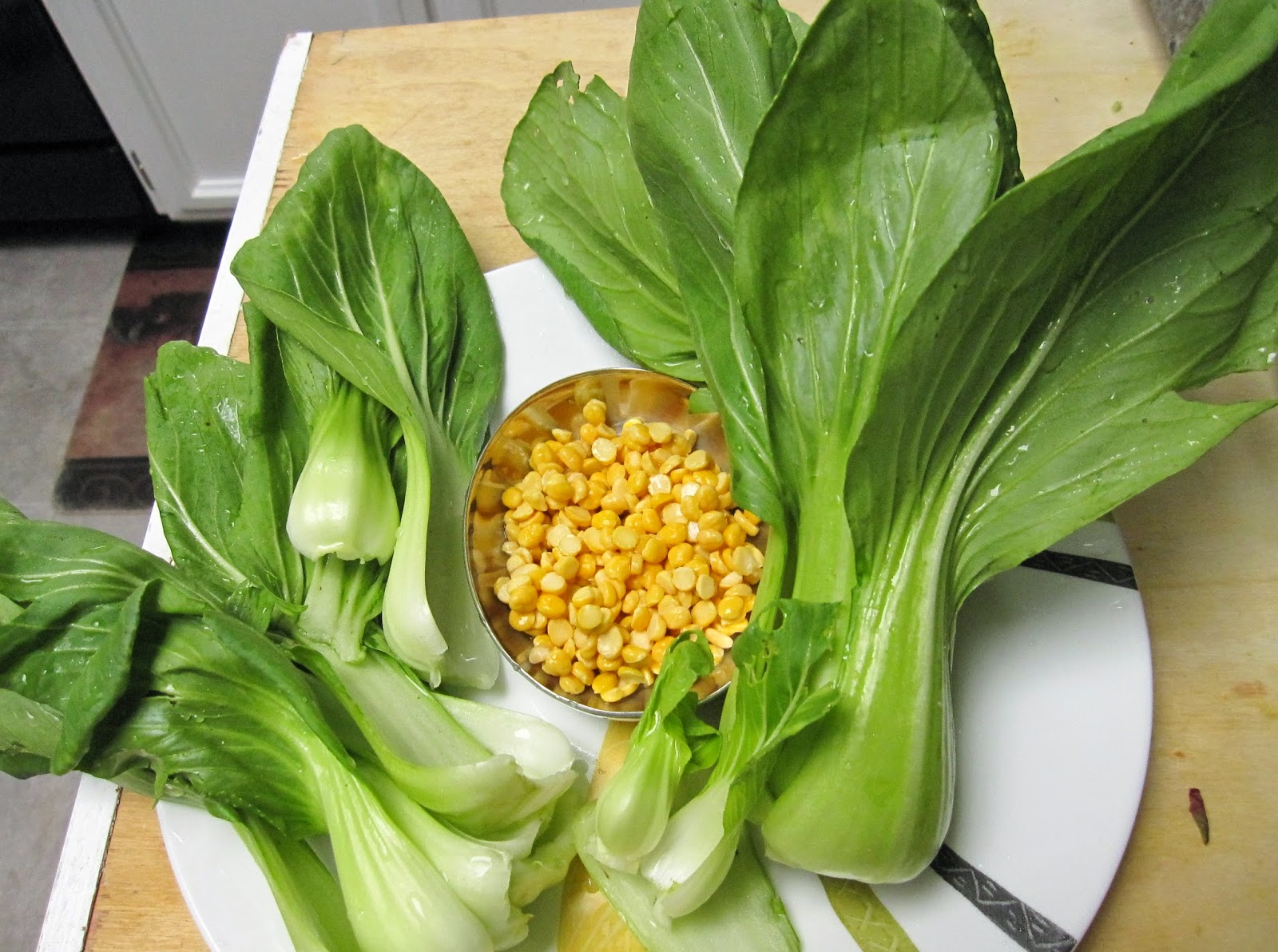Bok choy is a leafy vegetable. popularly known as Chinese cabbage. Even though, I did not see in south Indian markets, recently, I saw it being sold in Delhi etc. Bok choy is often used in Chinese cuisine.
Bok choy contains a high amount of vitamins A and C. Bok choy is reported to prevent cancer in small doses.and very nutritious!
Bok choy is widely available in USA. In my attempt to prepare locally available vegetables in Indian cuisine, I tried this recipe. The end product is very tasty! It is very easy to prepare and less time consuming.
Baby bok choy:
Bok choy and soaked dal:
While cooking on low heat:
Ingredients:
- 3 or 4 heads of bok choy
- 3 tbsp. chana dal or moong dal
Seasoning:
- 1 or 2 red chili
- 1 tsp. mustard seeds
- 1 tsp. jeera seeds
- A pinch of hing
- Salt to taste
- 2 tsp. oil
Directions:
- Soak chana dal in water for 2 hours. ( moong dal need not be soaked)
- Wash and clean bok choy.
- Open every layer and clean carefully. Sometimes small bugs are seen inside.
- Cut the stems separately into fine pieces.
- Cut the green leaves into 1/2 inch pieces.
- Heat oil in a thick pan, add red chili, jeera and mustard seeds.
- When mustard seeds splutter, add hing.
- Add cut bok choy stems and let them cook for 2 minutes.
- Add cut leaves and drained chana dal. (if using moong dal, add washed moong dal)
- Sprinkle salt and stir.
- Reduce heat to simmer, cover and cook for a few minutes.
- Keep stirring in between.
- When dal is soft, turn the heat off.
Note:
The subzi is to be dry and not mushy.




No comments:
Post a Comment